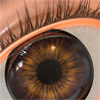Kabe wrote:CHRiTTeR wrote:And YES fresnell reflections are a MUST-HAVE-THINGY for ANY renderer now-a-days
Do you really think the NL coders have no clue about Fresnel? You MUST be kidding...
Yes, I find that also hard to believe. But why isnt there any IOR control then? Not all *dielectrics* have the same IOR you know.
Water (0° C) = 1.33346
Water (100° C) = 1.31766
Water (20° C) = 1.33283
Glass, Arsenic Trisulfide = 2.04
Glass, Crown (common) = 1.52
Glass, Flint, 29% lead = 1.569
Glass, Flint, 55% lead = 1.669
Glass, Flint, 71% lead = 1.805
Glass, Fused Silica = 1.459
Glass, Pyrex = 1.474
Crystal = 2.00
Diamond = 2.417
Emerald = 1.57
Ethyl Alcohol = 1.36
Beer = 1.34
Ice = 1.309
etc...
more rcontrolable colors and IOR settings for the metal material would be nice too.
Aluminum = 1.44
Bronze = 1.18
Chromium = 2.97
Copper = 1.10
Copper Oxide = 2.705
etc...
Fresnel reflection happens in *dielectrics*, and goes to 100% if viewed flat. In fact this is what it does in M~R, too.
100% when flat?!

U mean 0% when parallel (flat -> facing the camera) and 100% when perpendicular.

This is *not* true for Plastic, and believe it or not, this is correct physical behaviour.
Plastic DOES have IOR-based fresnel reflections.


And it seems u need to use the plastic material for far more then plastic alone (rubber, paint, leather,...) because there is no other alternatieve that gives u the needed options, thus u'll need an adjustable IOR get the
*correct physical behavios*.
Plastic = 1.460
Rubber, Natural = 1.5191
Asphalt = 1.635
Pearl = 1.53
Polystyrene 1.55
etc..
One of the few hopes I have for the new release is a great material engine, that allows great control about the physical properties.
Kabe
I agree on that one


And I hope an adjustable IOR for reflections and refractions is available in the final version. Otherwise it wouldn't be a final version in my eyes (sorry, just my opinion).
But the fact that there are only a few metals and glasses available makes me think this is a limitation of the current version. Thus it makes me think all the IOR and fresnel stuff will be available in the full version, at leat I hope soo


Also I do hop verry much they have added some support for the procedural maps! Coz I work a lot with those.
More scientifical info about fresnel and index of refraction:
http://wufs.wustl.edu/courses/epsc407_2 ... 030128.htm





 - By Gaspare Buonsante 20200309160206
- By Gaspare Buonsante 20200309160206